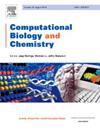揭示 UCEC 的生物功能:预后特征模型的启示。
IF 2.6
4区 生物学
Q2 BIOLOGY
引用次数: 0
摘要
背景:子宫内膜癌(UCEC)是一种常见的妇科肿瘤,预后不良。异常糖基化在肿瘤发生中起着关键作用。目前,还缺乏基于糖基化相关基因的 UCEC 预后特征。因此,我们的研究旨在构建一个预测模型,并验证相关基因与生物学功能之间的相关性:方法:我们利用 TCGA 数据库建立了预后模型,并探讨了它们与生存结果的关系。我们进一步选择了关键基因,以验证它们在组织中的表达,并评估它们对细胞行为的影响:结果:高危组的临床预后明显差于低危组。提名图模型能准确预测 UCEC 患者的预后。此外,我们还发现OLFML1是一个独特的特征基因,可抑制UCEC的进展并降低体外抗辐射能力:我们的模型基于 UCEC 中的糖基化相关基因,能有效识别高危患者并提供有价值的预后信息。此外,OLFML1在UCEC中起肿瘤抑制作用,并能增强放射敏感性,这为提高疗效提供了一个新的潜在靶点。本文章由计算机程序翻译,如有差异,请以英文原文为准。
Unraveling the biological functions of UCEC: Insights from a prognostic signature model
Background
Uterine corpus endometrial carcinoma (UCEC) is a prevalent gynecological tumor with a bleak prognosis. Anomalous glycosylation plays a pivotal role in tumorigenesis. Currently, there is a lack of prognostic signatures based on glycosylation-related genes for UCEC. Thus, our research aims to construct a predictive model and validate the correlation between relevant genes and biological functions.
Methods
Using the TCGA database, we developed prognostic models and explored their relationships with survival outcomes. We further selected key genes to verify their expression in tissues and assess their impact on cellular behavior.
Results
The clinical prognosis of the high-risk group was significantly worse than that of the low-risk group. The nomogram model accurately predicted UCEC patient prognosis. Additionally, we identified OLFML1 as a unique signature gene that can inhibit UCEC progression and reduce radiation resistance in vitro.
Conclusions
Our model, which is based on glycosylation-related genes in UCEC, effectively identifies high-risk patients and provides valuable prognostic information. In addition, OLFML1 acts as a tumor suppressor in UCEC and enhances radiosensitivity, suggesting a new potential target for improving therapeutic efficacy.
求助全文
通过发布文献求助,成功后即可免费获取论文全文。
去求助
来源期刊

Computational Biology and Chemistry
生物-计算机:跨学科应用
CiteScore
6.10
自引率
3.20%
发文量
142
审稿时长
24 days
期刊介绍:
Computational Biology and Chemistry publishes original research papers and review articles in all areas of computational life sciences. High quality research contributions with a major computational component in the areas of nucleic acid and protein sequence research, molecular evolution, molecular genetics (functional genomics and proteomics), theory and practice of either biology-specific or chemical-biology-specific modeling, and structural biology of nucleic acids and proteins are particularly welcome. Exceptionally high quality research work in bioinformatics, systems biology, ecology, computational pharmacology, metabolism, biomedical engineering, epidemiology, and statistical genetics will also be considered.
Given their inherent uncertainty, protein modeling and molecular docking studies should be thoroughly validated. In the absence of experimental results for validation, the use of molecular dynamics simulations along with detailed free energy calculations, for example, should be used as complementary techniques to support the major conclusions. Submissions of premature modeling exercises without additional biological insights will not be considered.
Review articles will generally be commissioned by the editors and should not be submitted to the journal without explicit invitation. However prospective authors are welcome to send a brief (one to three pages) synopsis, which will be evaluated by the editors.
 求助内容:
求助内容: 应助结果提醒方式:
应助结果提醒方式:


